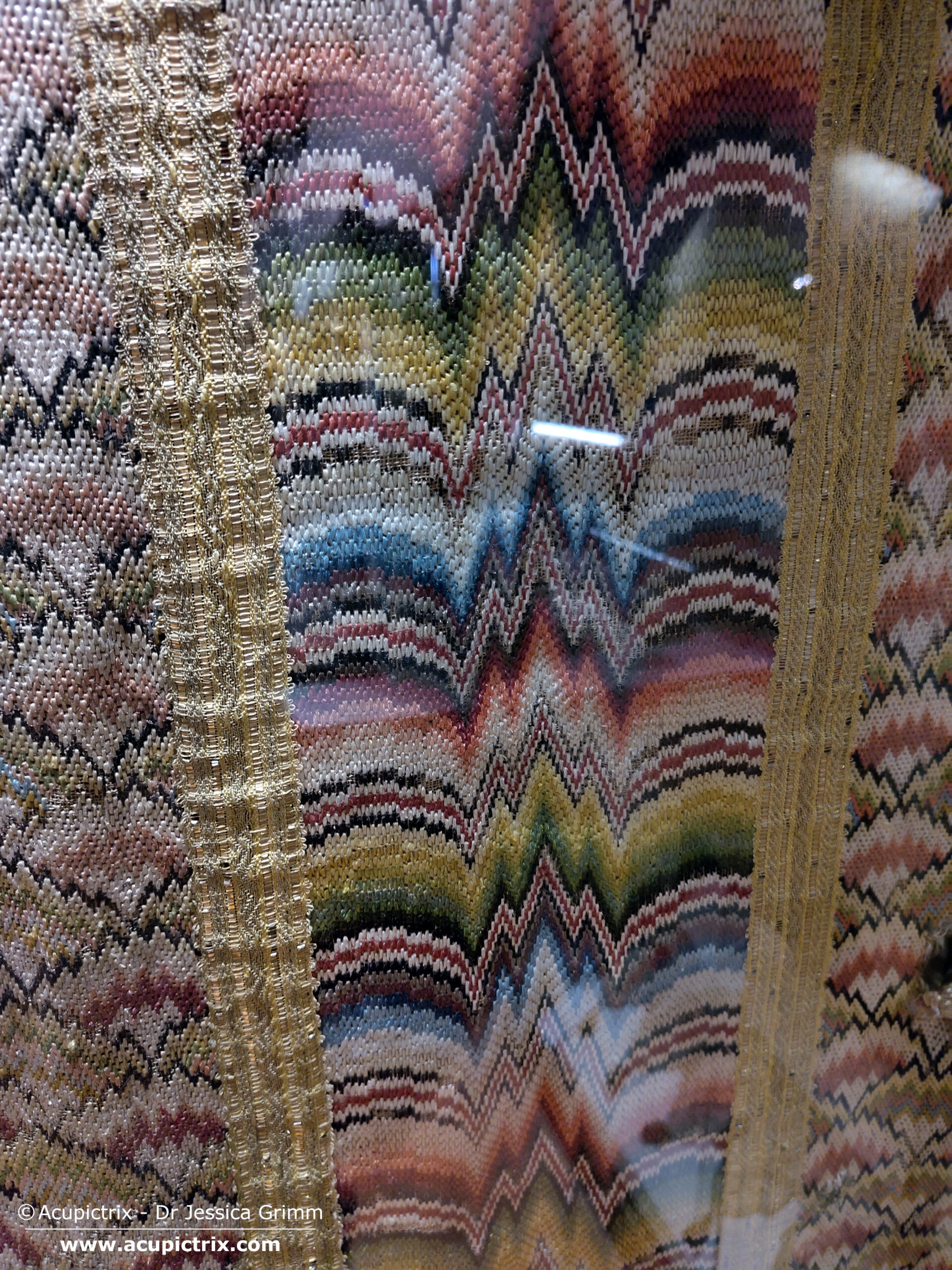Your basket is currently empty!
Category: Period
-
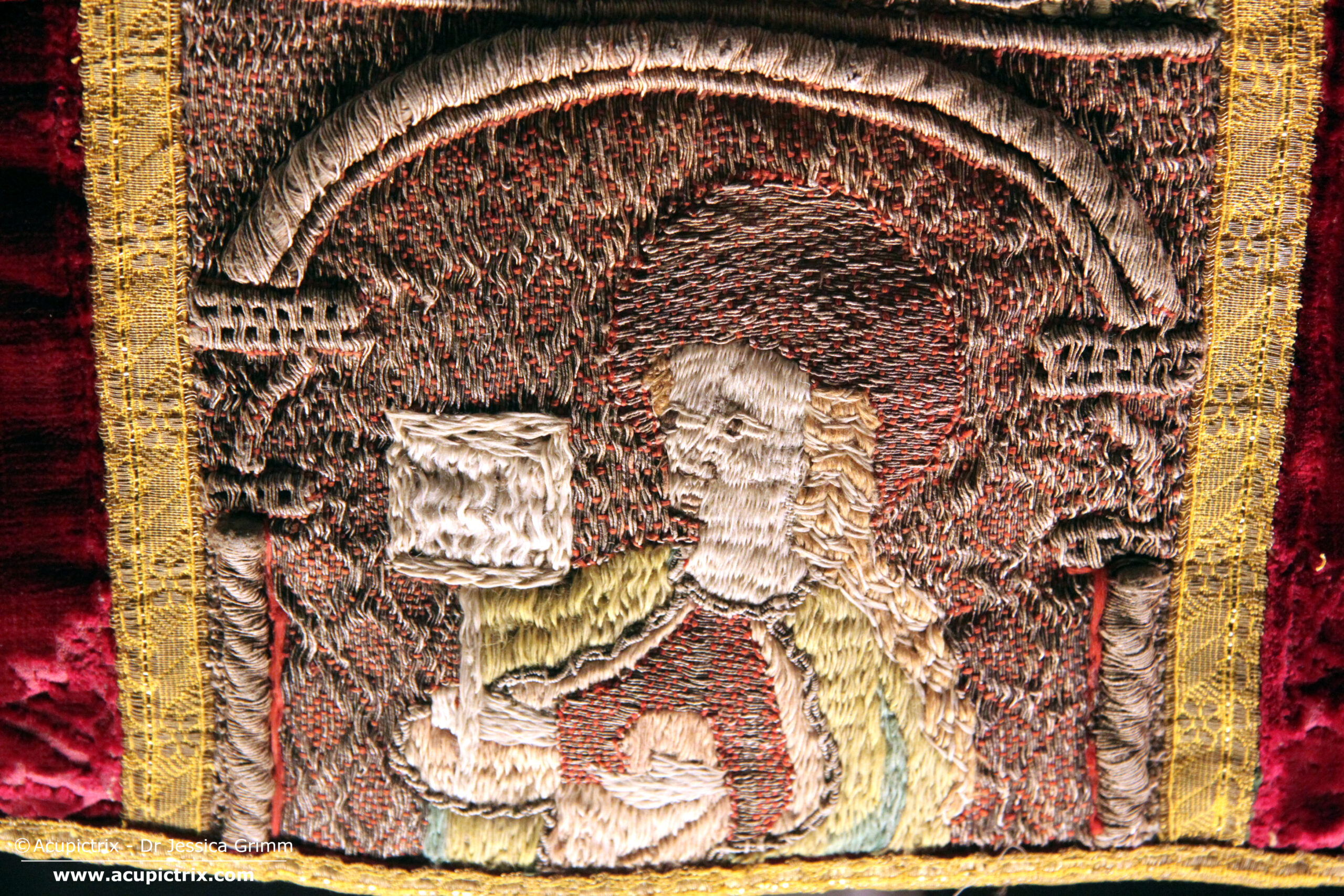
Last week, we examined a medieval goldwork embroidery chasuble with two different types of stumpwork, dating to the first half of the 15th century and made in the Franconia region of Germany. This week, I have another lovely chasuble for you that also displays medieval goldwork embroidery from two older vestments. You can see the…
-
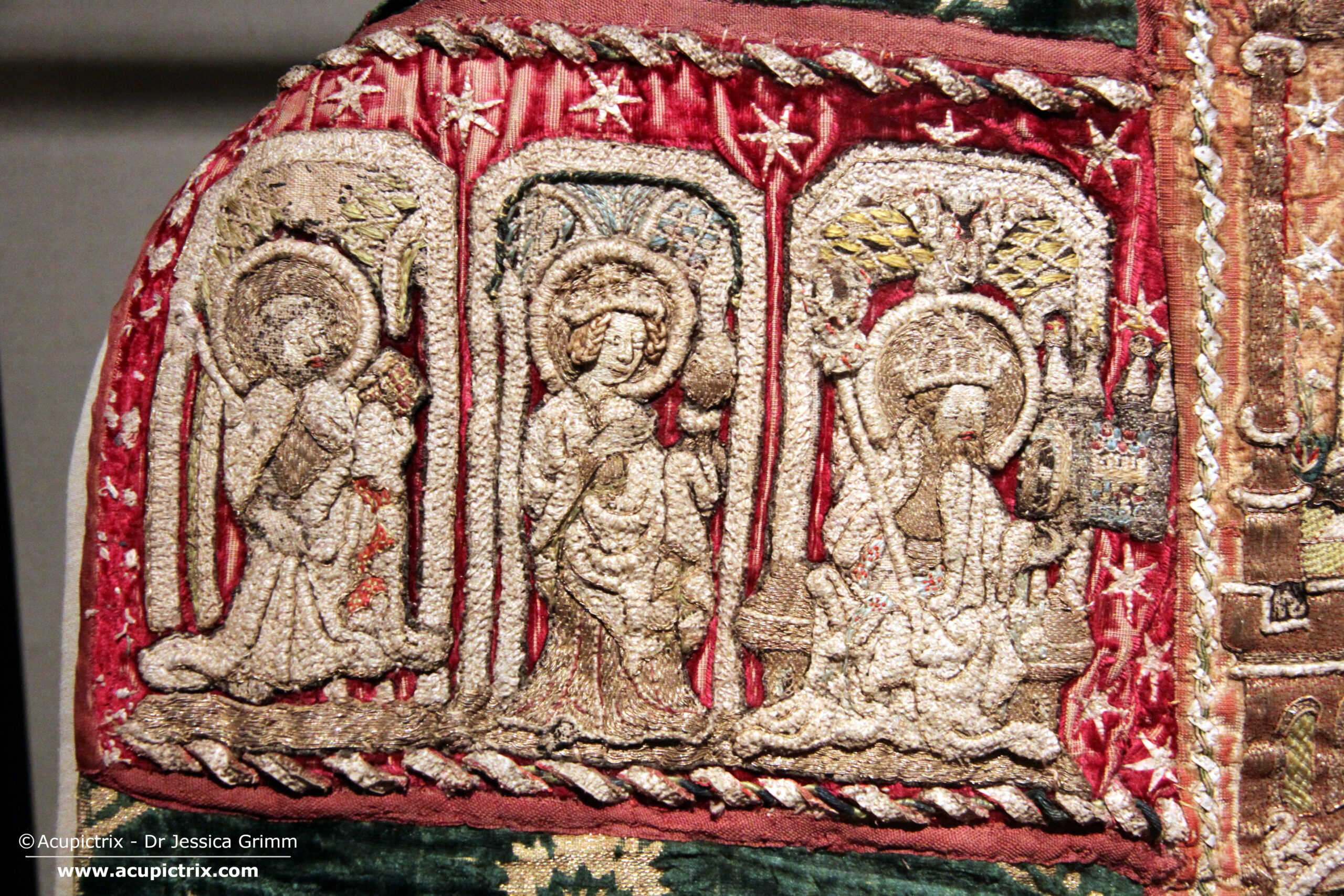
In the past months, we have examined medieval goldwork embroidery centres in Italy and England. This month, we will explore medieval goldwork embroidery made in the Franconia Region in Germany, which lies just south of the centre of Germany. Important cities include Nuremberg, Würzburg, Bamberg, Bayreuth, Ansbach, Coburg, Meiningen and Schwäbisch Hall. As far as…
-
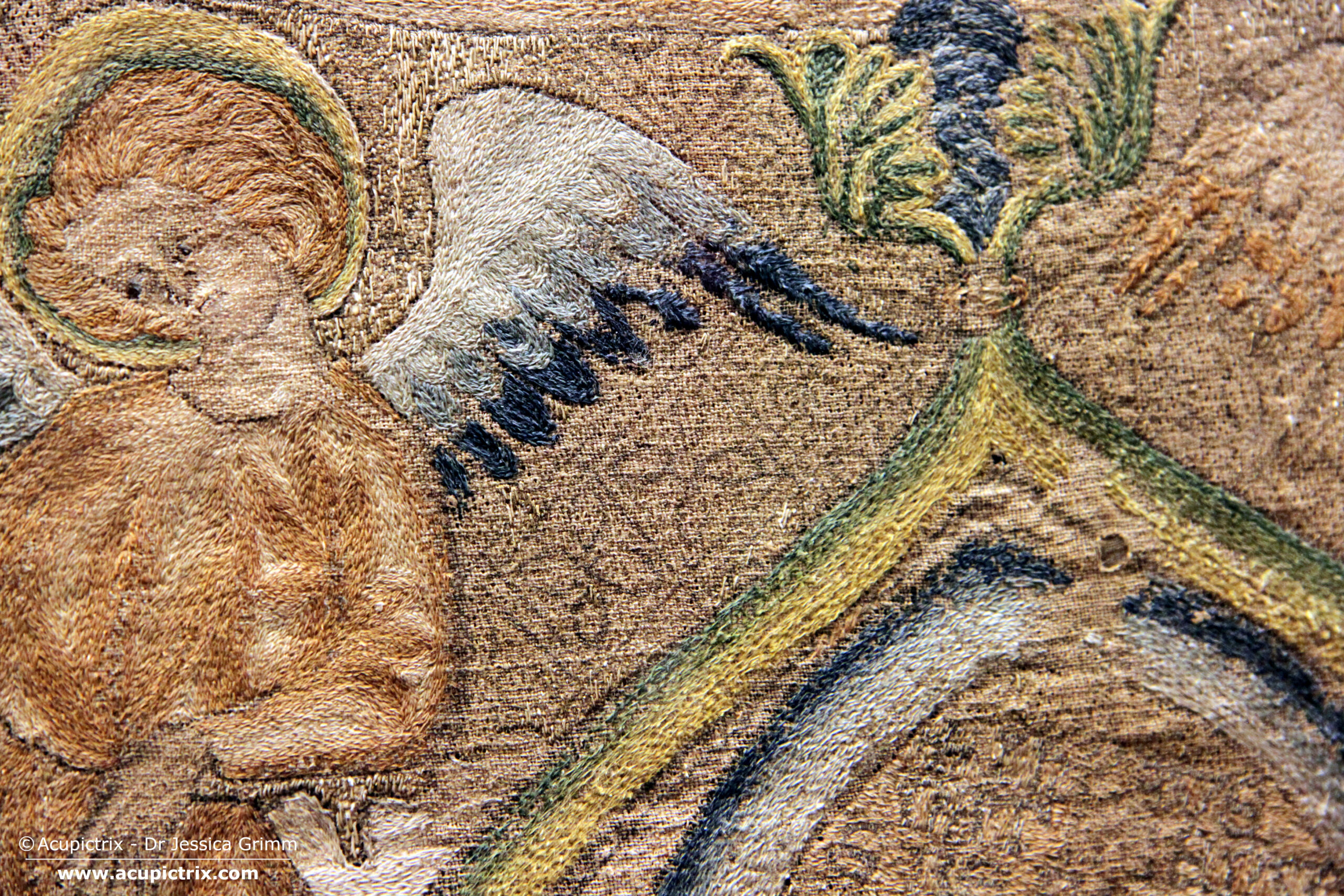
Last year, I spent many delightful hours studying the Bologna Cope at the Museo Civico Medievale in Bologna, Italy. This Opus anglicanum cope was made in England between AD 1310 and 1320. The cope was also displayed at the epic Opus anglicanum exhibition in the V&A in 2016/2017. Although the cope is missing its hood,…
-
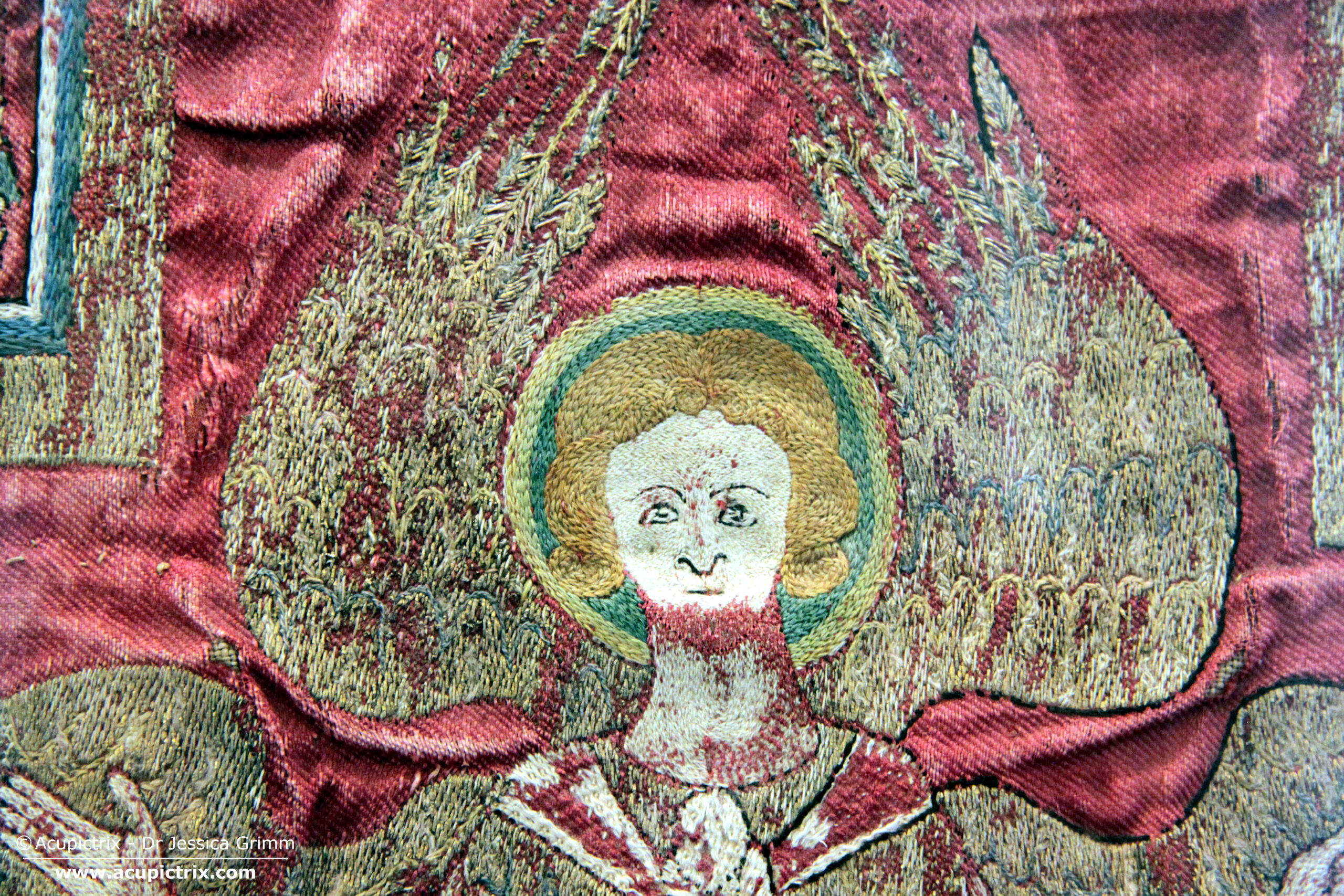
Several Italian museums hold Opus anglicanum embroidered vestments. On the one hand, this is a testament to Opus anglicanum being hugely popular with European clergy in the 13th and 14th centuries. However, it was also the result of the Italians remaining Catholic and England going through the destructions of the Reformation. Some of these splendidly…
-

We continue our exploration of medieval goldwork from Tuscany with a couple of stunning orphreys. One is kept in a museum, one in a Cathedral, and the third is in a private collection. In 2019, they were displayed side by side in Castello Buonconsiglio. All three are of exceptional quality, both in design and embroidery…
-
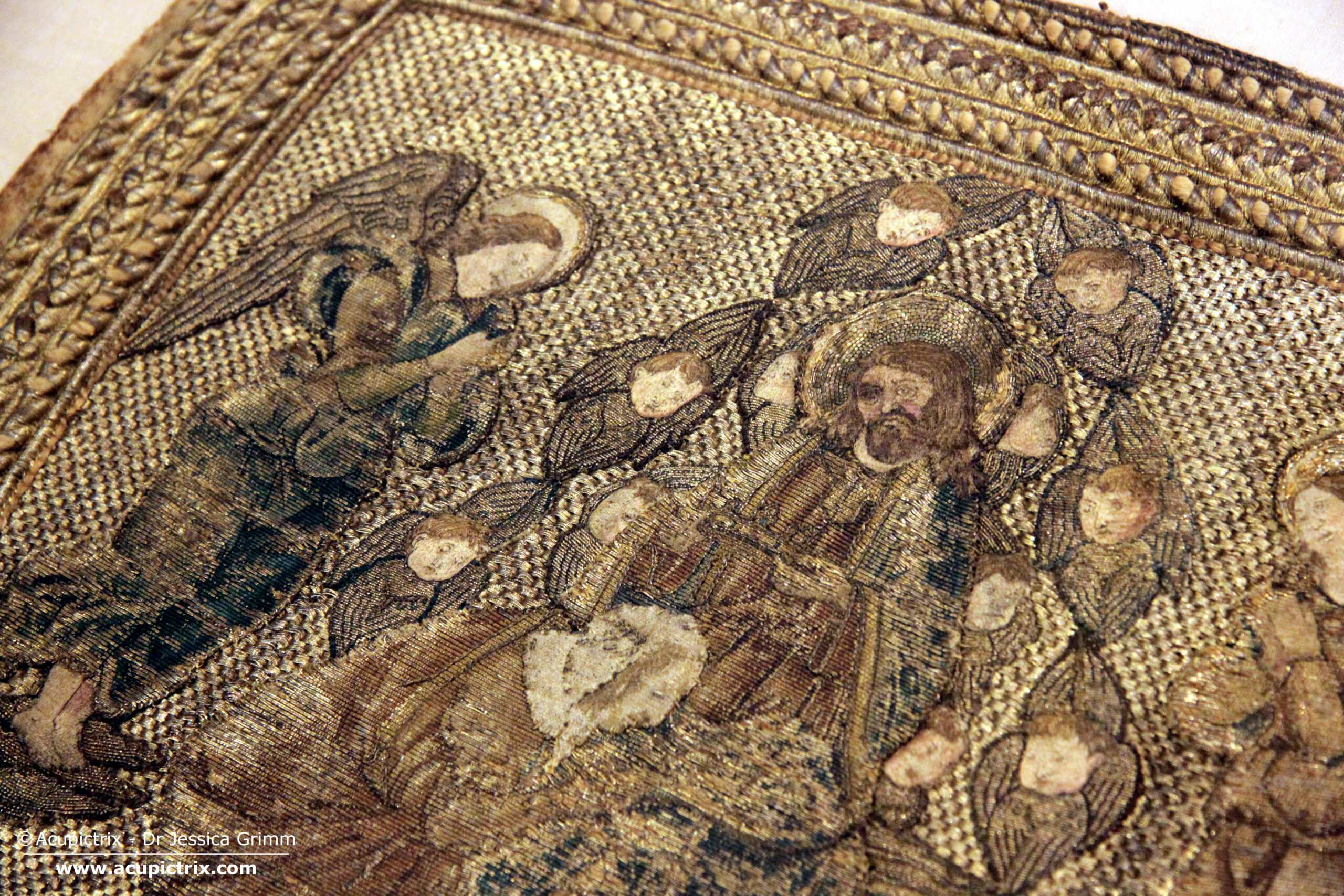
Last week, we examined the vestments made for Pope Nicholas V. Today, we continue our explorations of medieval goldwork from Tuscany, Italy with a cope hood made in Florence in the first quarter of the 16th century. The design of the Coronation of the Virgin is attributed to Sandro Botticelli (AD 1445-1510). Whether this means…
-
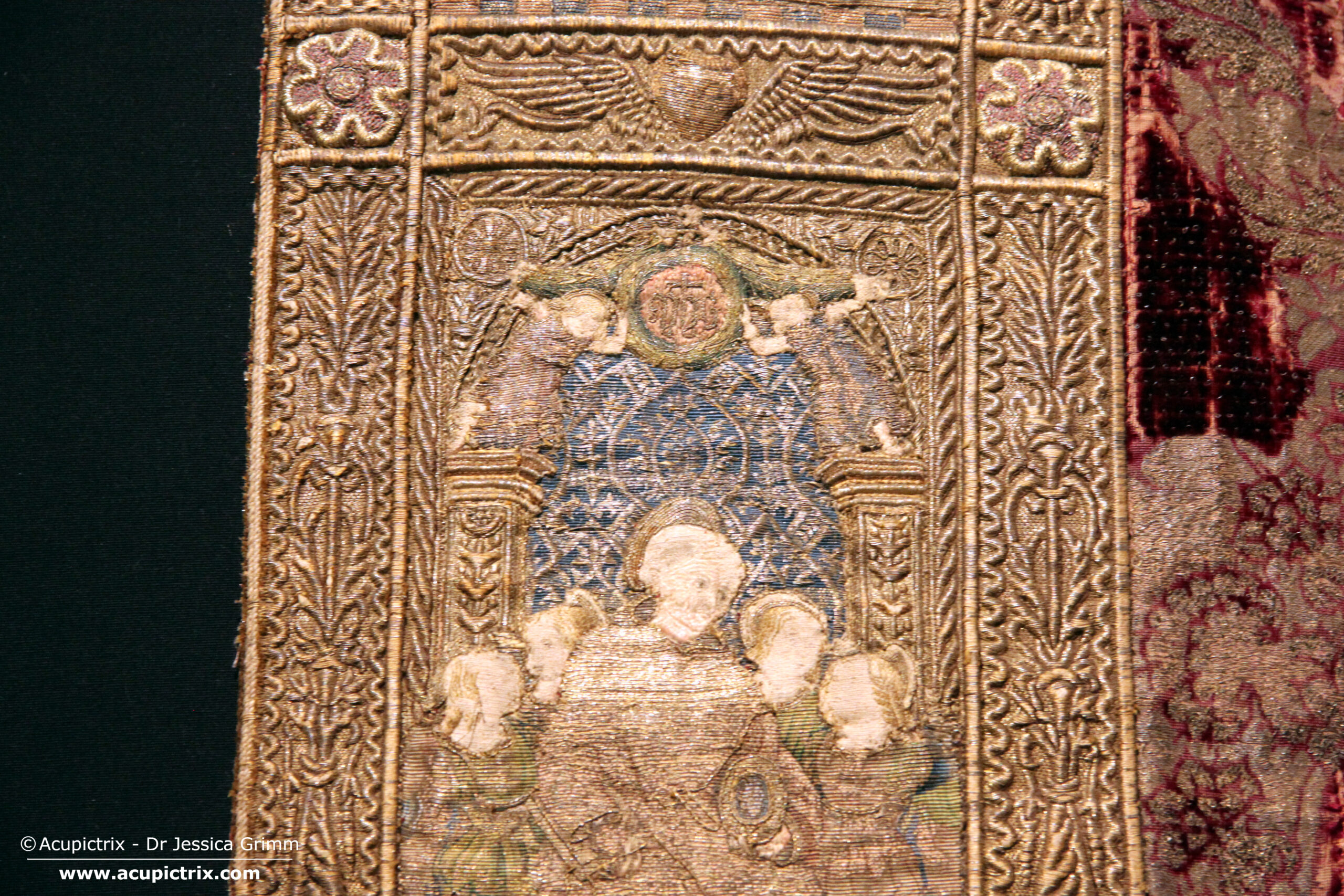
This month, we will examine medieval goldwork from Tuscany, Italy. I was fortunate enough to see many of these pieces when they were exhibited at Castello Buonconsiglio in 2019. The series of blog posts is also in preparation for a trip to Tuscany that my husband and I hope to make next month. We’ll kick…
-
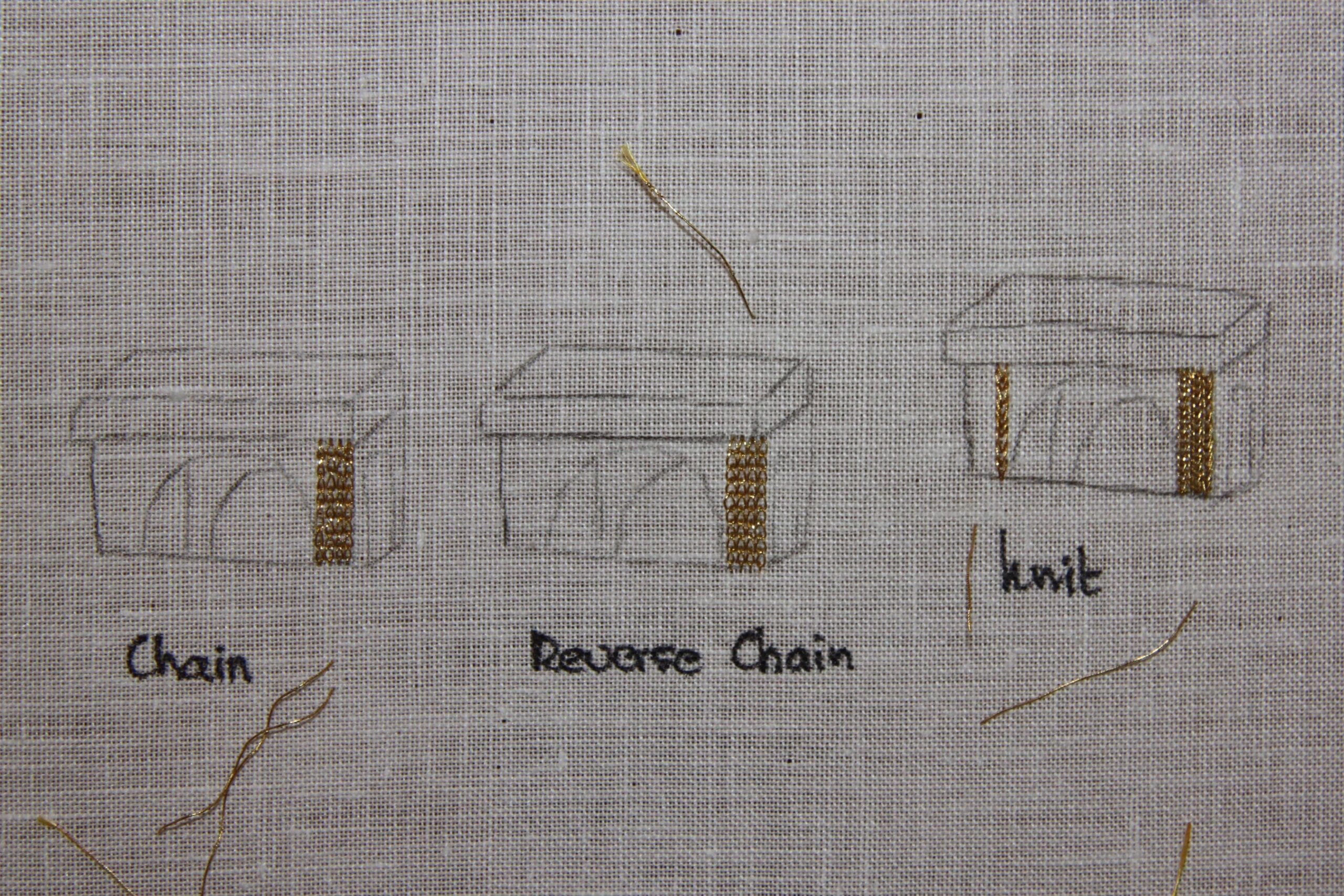
Identifying an embroidery stitch correctly on a historic piece is not always easy. As inspecting the back for correct identification is often necessary, historic embroideries can be challenging. Either the back cannot be checked due to a lining or is displayed, so it is inaccessible. The solution? Make embroidery samples and compare them with the…
-
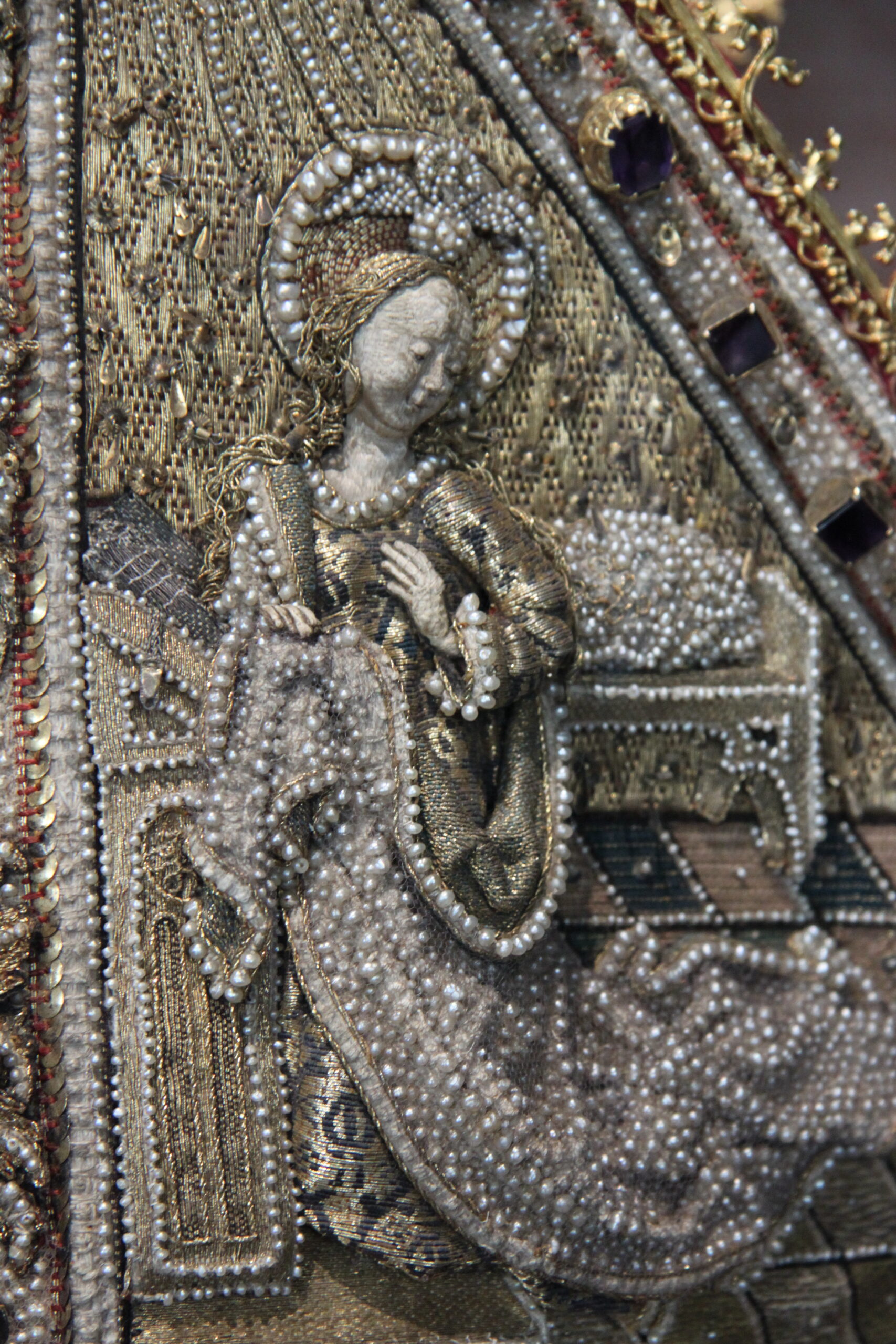
Last week and the week before, we looked at beautifully pearl-embroidered mitres from Italy and France. Today, we will look at probably the most spectacular pearl-embroidered mitre of them all: the mitre made by Hans Plock for Cardinal Albert of Brandenburg in AD 1514 in Halle, Germany. The piece is permanently displayed at the Rüstkammer…

